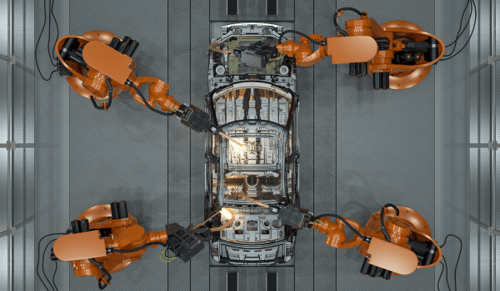Driving Qt in Automotive at Embedded World
March 02, 2010 by Adam Walhout | Comments
The Qt team is at Embedded World this week, and among other things, we´re showing off Qt´s capabilities in the automotive industry – especially in the area of UIs for in-vehicle-infotainment (IVI) systems. If you happen to be driving by the Nürnberg Messe and feel like checking out some Qt-based automotive demos, you´ll find the Connected Car Demo created by Qt partner Digia, and the Genivi 1.0 reference platform at the Qt booth in Hall 11 Stand 110.
But, we´re not the only exhibitors showing off Qt automotive demos at the event.
Visteon Infotainment and Internet Platform in the Intel booth
Those of you who visited CES (or have been faithfully following the Qt Studios channel on YouTube) may have already seen the Visteon Infotainment and Internet Platform, a high-end automotive system powered by Qt. It´s based on an Intel Atom processor and a Linux operating system, enhanced with automotive standards connectivity using CAN (Controller Area Network) and MOST (Media Oriented Systems Transport). The demo is an example of where the MeeGo platform for Automotive IVI could be heading.
Impressive acronyms aside, the prototype really shows off well the capabilities of Qt for automotive UIs. The front display and the two rear seat displays are driven by the same CPU running three Qt applications in parallel. The Qt-based UI features a combination of AM/FM and Internet radio, seamless connectivity with consumer electronics devices like music players and mobile phones, and a video player as well as widgets & Internet browsing.
By tapping into Qt's rich set of building blocks, a team of Visteon, Pelagicore and Nokia, Qt engineers was able to put the whole HMI together in less than 4 weeks:
- Qt´s event handling made it easy to combine touch, turn-push-knob and IR input in one system
- The Qt Graphics View 2D graphics canvas and the Qt Animation Framework provided the functionality needed to delivered a rich, fluid user experience
- The Phonon multimedia framework in Qt was used to integrate audio and video by reading media locally from connected consumer electronics devices or stream Internet radio over a network
- The Qt WebKit integration was used for Internet browsing, an RSS reader and OpenStreetMap integration, demonstrating how-to incorporate real-time web content and services
Those of you visiting Embedded World can try the demo out at the Intel booth. If you can´t make it down to Nürnberg to see the Visteon Infotainment and Internet Platform in action, check out the video for the next best thing. You can also visit the Qt website for more info on Qt in Automotive.
Blog Topics:
Comments
Subscribe to our newsletter
Subscribe Newsletter
Try Qt 6.7 Now!
Download the latest release here: www.qt.io/download.
Qt 6.7 focuses on the expansion of supported platforms and industry standards. This makes code written with Qt more sustainable and brings more value in Qt as a long-term investment.
We're Hiring
Check out all our open positions here and follow us on Instagram to see what it's like to be #QtPeople.


